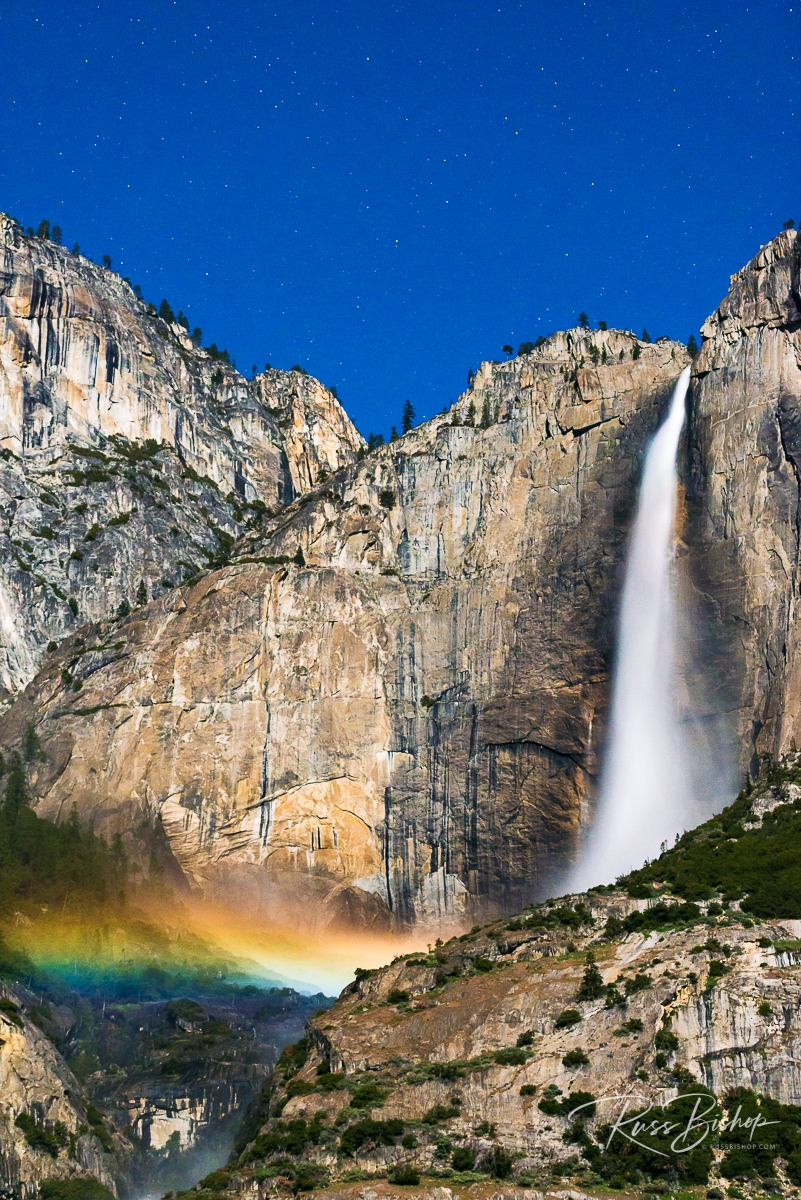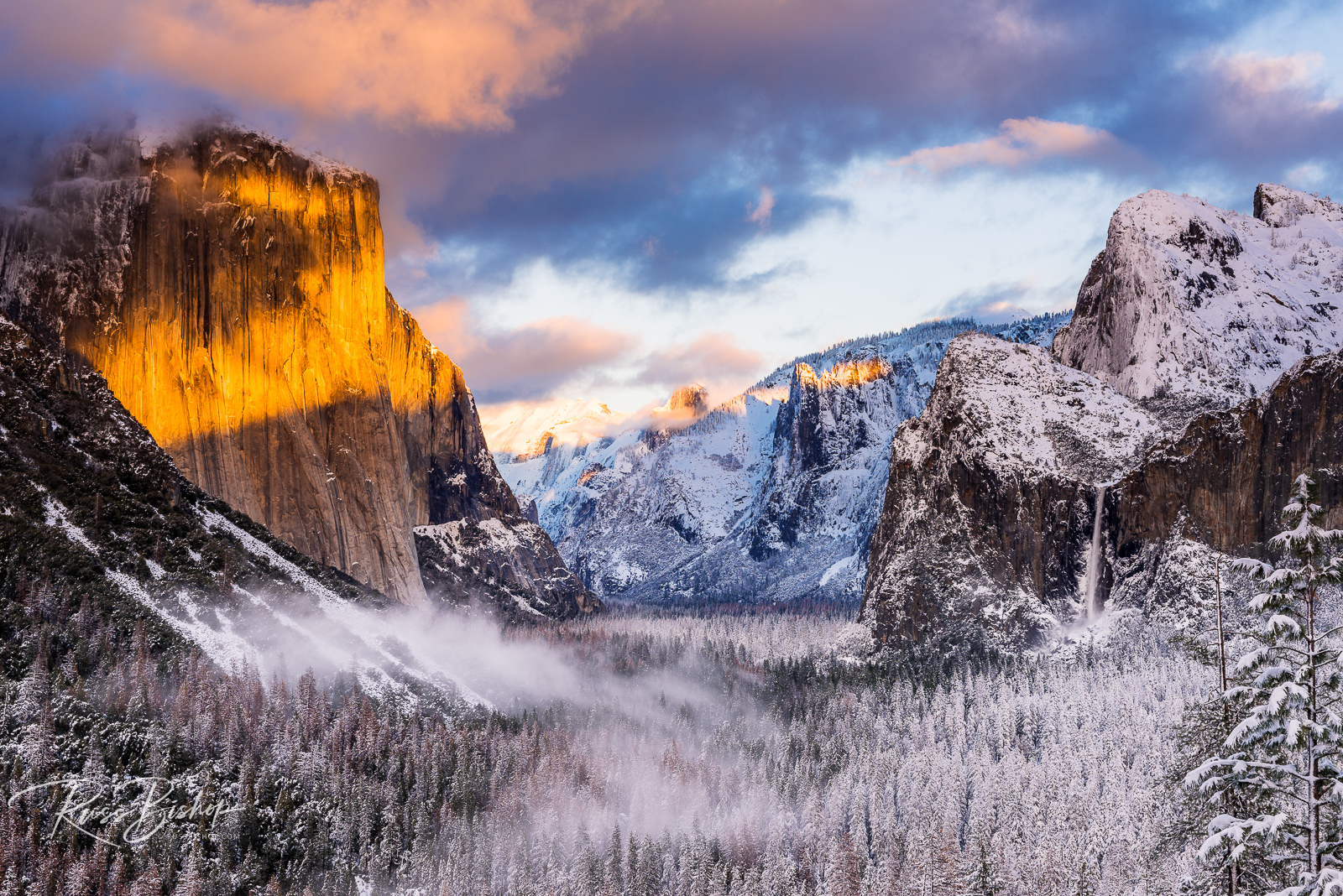
Yosemite Moonbows. Yosemite National Park is a mecca for adventure and nature photography with its steep granite walls, lush meadows, alpine spires and booming waterfalls. I’ve spent four decades exploring its unique features and it always feels like home whenever I return.
But as with any well-loved location, it’s easy to find yourself in a creative quandary when it comes to seeking out new perspectives. With iconic landmarks around every turn, it’s a challenge to create fresh images that (no matter how beautiful) don’t leave you feeling as if you’ve just seen that same view in a recent car ad or magazine. So what to do?
As I’ve mentioned in a previous post, waterfalls are always a rewarding subject as no two shots will ever be the same. The flow of the water is in a constant state of flux and experimenting with shutter speed opens up a whole new world of creative expression. From what Ansel Adams called “straight photography” to ethereal artistic interpretation, the sky really is the limit with this liquid landscape.
Also known as lunar rainbows, moonbows are a unique phenomenon that occurs when the full moon illuminates the spray of a waterfall. The moon needs to be low in the sky (less than 42 degrees) and the night sky must be very dark making Yosemite an ideal location. The best times are typically 2 to 3 hours before sunrise or 2 to 3 hours after sunset when the brightness of the stars compliments the moonlight reflecting off the water.
Framing can be a challenge in such dim light, but once you have a composition set and your eyes have adjusted the fun part begins. Watching the moonbow magically appear and disappear with the ebb and flow of the spray is mesmerizing and makes for an evening of photography you won’t soon forget.
©Russ Bishop/All Rights Reserved


